
Month: November 2016

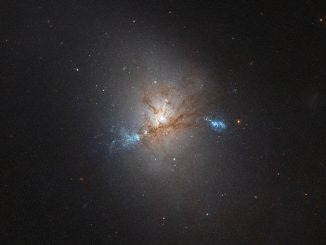
Hubble captures a galactic cannibal
This NASA/ESA Hubble Space Telescope image reveals NGC 1222, a galaxy with a rather eventful story to tell. NGC 1222 has been described as a peculiar example of a so-called lenticular galaxy, but one that exhibits very recent star formation on a huge scale — an event known as a starburst — due to having recently consumed two dwarf galaxies.

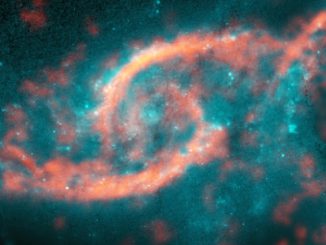
Interacting galaxies produce eye-shaped “tsunami” of stars
Astronomers using the Atacama Large Millimetre/submillimetre Array (ALMA) have discovered a tsunami of stars and gas that is crashing midway through the disc of a spiral galaxy known as IC 2163. This colossal wave of material — which was triggered when IC 2163 recently sideswiped another spiral galaxy dubbed NGC 2207 — produced dazzling arcs of intense star formation that resemble a pair of eyelids.


Galactic merger exposes supermassive black hole
Astronomers using the super-sharp radio vision of the National Science Foundation’s Very Long Baseline Array (VLBA) have found the shredded remains of a galaxy that passed through a larger galaxy, leaving only the smaller galaxy’s nearly-naked supermassive black hole to emerge and speed away at more than 2,000 miles per second.

Supercomputer comes up with profile of dark matter
In the search for the mysterious dark matter, physicists have used elaborate computer calculations to come up with an outline of the particles of this unknown form of matter. The scientists extended the successful Standard Model of particle physics which allowed them, among other things, to predict the mass of so-called axions, promising candidates for dark matter.
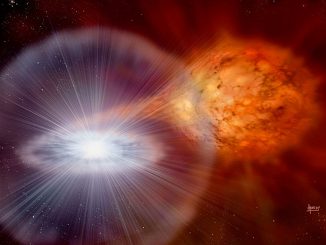
Study confirms that novae are main source of lithium in the universe
Lithium, like the majority of chemical elements, can trace its origins back to astrophysical phenomena, but its point of genesis was unclear. Recently, a group of researchers detected enormous quantities of beryllium-7 — an unstable element which decays into lithium — inside nova V5668 Sgr, which suggests that novae are the main source of lithium in the galaxy.
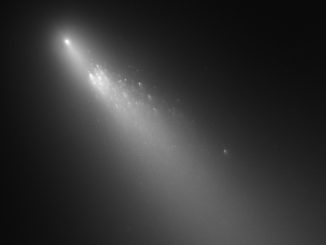
Relationship revealed between chemicals found on comets
A new study reveals similarities and relationships between certain types of chemicals found on 30 different comets, which vary widely in their overall composition compared to one another. The research is part of ongoing investigations into these primordial bodies, which contain material largely unchanged from the solar system’s birth some 4.6 billion years ago.
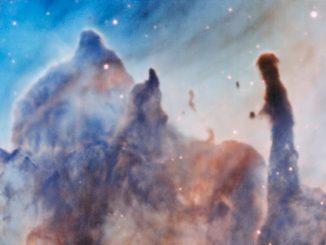
‘Pillars of destruction’ in the Carina Nebula
Spectacular new observations of vast pillar-like structures within the Carina Nebula have been made using the MUSE instrument on ESO’s Very Large Telescope. The different pillars analysed by an international team seem to be pillars of destruction — in contrast to the name of the iconic Pillars of Creation in the Eagle Nebula, which are of similar nature.
